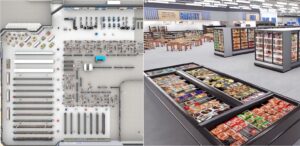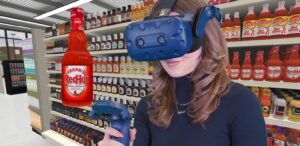How Retail is Using VR to Innovate Planograms Amid Product Shortage
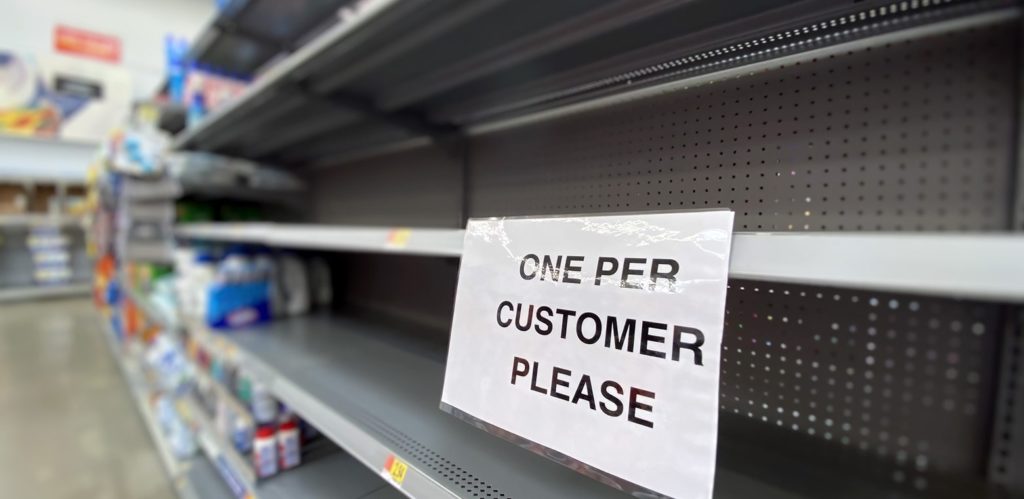
The labor and product shortages in 2021 has made it difficult for stores to keep shelves stocked. Virtual reality is providing a collaborative space for innovation despite global supply chain realities.
Pandemic induced supply chain issues and labor shortages in 2021 have changed retail experiences and strategies. Just as retailers were ramping up their assortments with more brands and niche products, a global manufacturing disruption altered their ability to do so. Categories that were once highly saturated with numerous brands and product options are now only offering half of previous assortments.
To solve for these circumstances, retailers are asking about insights surrounding 3 key areas: simplified shelves, product substitutions and category walks.
The problem is that manufacturers face such limited inventory that it is challenging to obtain products for innovation purposes. This does not mean that retail store planning should cease to exist. In fact, the rapidly changing circumstances have made it more important than ever. It is time for retailers to find a new way to innovate in-store ideas that does not involve physical products and labs.
How can retailers appropriately optimize their goods and services at a time where retail jobs remain unfilled and product inventory is desperately required in stores?
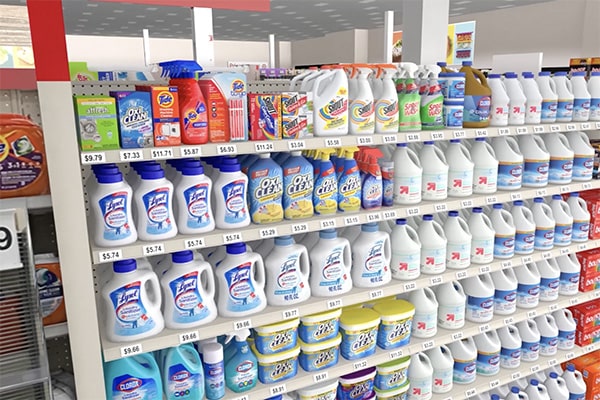
Strategy: Simplified Shelf
Although this inventory shortage has caused a lot of headaches, not all impacts may be considered harmful. For example, it has led to the resurgence of a more simplified planogram that consists of core products with more facings to fill in the gaps.
Through these simplified planograms, shoppers are no longer struggling to find the right product for their needs. In fact, many customers are finding the limited selection easier to shop.
Of course, the ideal simplified shelf is still different for every category and will elicit different shopper reactions. In order to identify and create the most easily shoppable aisle for your category, different versions of a more simplified shelf should be created and tested.
Solution: Digital Planogram and Space Planning
One technology that brands and retailers are taking advantage of for category management solutions is virtual reality (VR). Agile 3D planogram software in VR allows category managers to quickly develop realistic visual merchandising concepts that can be seamlessly transitioned to field research.
These virtual planograms are constructed using digital 3D product models and fixtures so excess inventory and space is not required. This allows brands to establish unlimited versions of simplified shelves without use of their high-demand physical inventory. It also simplifies internal collaboration because all work can be done online as opposed to in-person set-up of test shelves within a physical lab space.
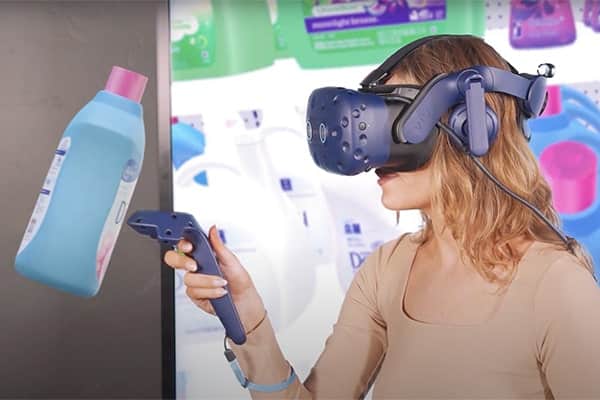
Strategy: Product Substitutions
This inventory shortage has left grocery stores with a lack of products and made empty shelves the new normal. Less available product means that creating planograms is a hassle and substitution is occurring regularly at the shelf. Customers have gone from frustrations over out-of-stocks to expecting that they will need to find a product substitution for their favorite items.
Solution: Virtual Store Testing
In order to effectively understand the impact that product substitution is having on your category, it is necessary to examine purchase decisions. To do so, product planograms can be evaluated using virtual reality market research.
VR research uses headsets with eye-tracking to immerse consumers in a virtual store experience that tracks their movements, attention and purchases to uncover in-depth insights into their shopping behavior. Through testing shelf planograms in virtual reality, you can identify and plan for areas of high substitution and ensure that your products will perform well in these circumstances.
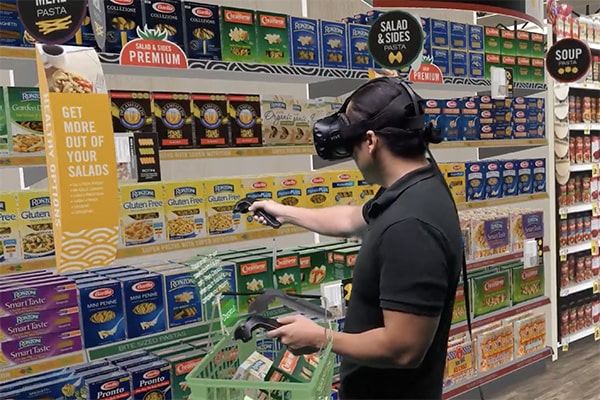
Strategy: Category/Store Walks
This inventory and labor market shortage has made it virtually impossible to do in-person store walks. There are limited physical products and retail workers to stock the shelves and perform resets. It has made gathering consumer behavior on floor plans, displays, promotions, and packaging extremely difficult.
Solution: Online Shopping Exercises
Aside from headset based virtual reality research, retail planograms can also be evaluated remotely through online shopping exercises. Respondents navigate and shop a virtual brick and mortar store on their computer as they would in the physical world.
Virtual online market research generates reliable insights though interactive store shopping exercises that offer a more engaging and realistic experience compared to standard online surveys. The rise in freelance work from individuals working from home also provides significant opportunity for brands to find online respondents to complete these experiential surveys. This allows retailers to optimize in-store assortments and increase sales amidst having limited product availability and a retail labor shortage.
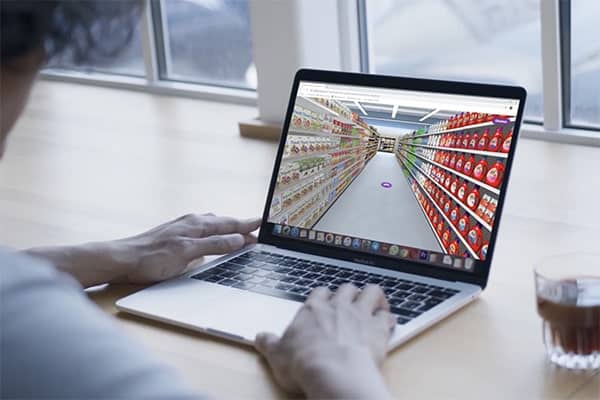
Although market research is currently unable to be reliably carried out in the physical world, it has made room for new and possibly more efficient ways for retailers to gather critical shopper insights. Virtual reality software can be used to accelerate the category management process and improve how the retail business innovates.
Subscribe to our newsletter
Get our blogs and the latest retail news delivered to your inbox monthly.
Recent Posts
How to Use 3D VR for Smarter Store Layout and Design
Explore how VR is revolutionizing grocery store layout and design planning by offering enhanced blueprint visualization in immersive 3D environments. Grocery store layout strategy is essential for establishing a positive and productive customer experience. A thoughtfully designed layout not only improves convenience but also fosters a sense of discovery, leading to longer, more enjoyable shopping…
Sauce & Condiment Sales Heat Up as New Tech Helps Out
Young Millennials and Gen Z consumers have fueled a boom in hot sauce trends and condiment sales. This surge is pushing leading brands and retailers to elevate their game with smarter virtual product innovation and assortment optimization. The condiment and hot sauce industry is thriving in 2024, driven by evolving consumer tastes and the growing…
Candy, Bar, and Snack Industry use VR to Keep Up with Consumers
Discover the snack trends of 2024 that are pushing the snack bar market and candy industry to innovate and evolve using cutting-edge technology. The Convenience Store News 2024 Industry Deep Dive revealed numerous snack food industry trends, highlighting a shift toward healthier snacking options and a growing preference for savory flavors. As various snack categories…

